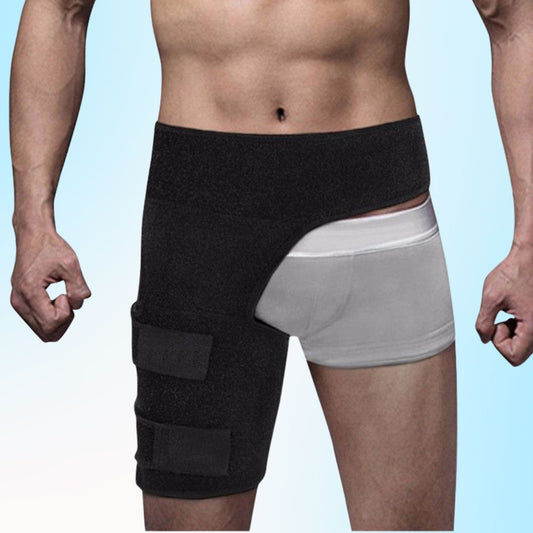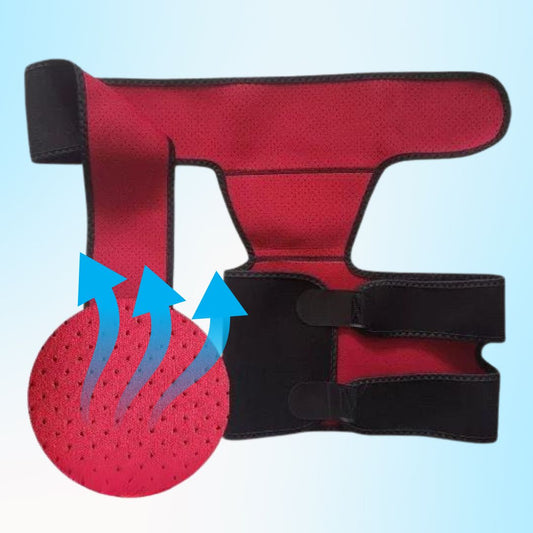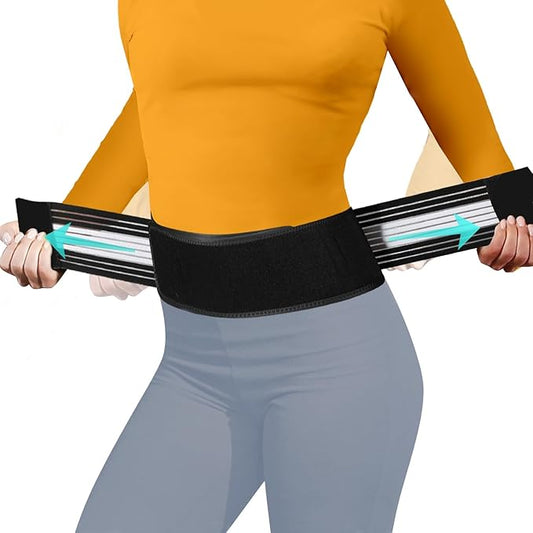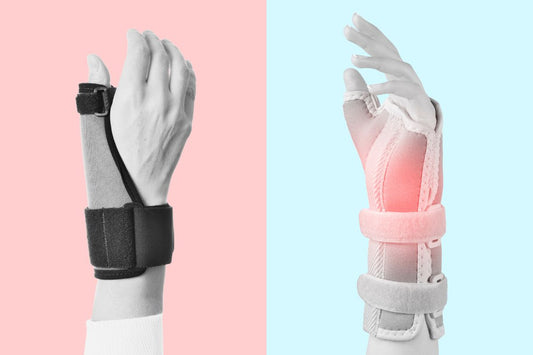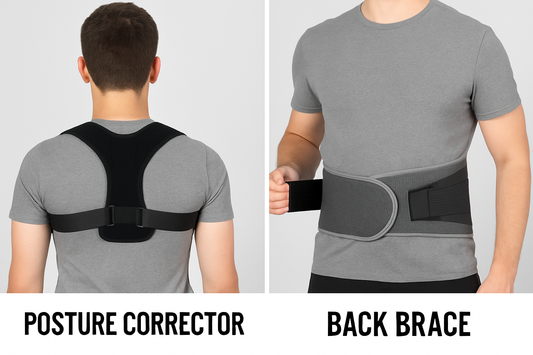Hip pain is one of the most common complaints among adults—yet it remains poorly understood by many. It can affect people at any age, from active individuals to those who sit for long periods. Some experience sharp, localized discomfort; others report a deep ache that radiates into the thigh or lower back. Whether it appears suddenly or builds gradually over time, persistent hip pain can interfere with daily activities and reduce overall mobility.
In this article, we explore common causes of hip pain, how to identify contributing factors, and practical steps that individuals can take to support recovery and reduce discomfort—especially in everyday, non-clinical settings.
Common Causes of Hip Pain in Daily Life
Hip pain can originate from the joint itself, the surrounding muscles and soft tissue, or from structures elsewhere in the body such as the lower back. Below are several of the most frequent causes seen in real-world settings.
Overuse or Muscle Strain

One of the most common reasons people experience hip discomfort is overuse. This does not necessarily mean athletic overtraining—it can also involve seemingly simple but repetitive movements such as climbing stairs, prolonged walking, or working in a physically demanding job.
Example: A delivery worker who repeatedly steps in and out of a van throughout the day may develop soreness or tension in the hip flexors due to repeated lifting and twisting motions.
Muscle Weakness or Imbalances
The hip joint relies heavily on support from surrounding muscles—particularly the gluteal muscles, hip flexors, and deep core stabilizers. Weakness in these areas can lead to poor movement patterns, resulting in excessive stress on the hip joint itself.
Example: A desk-based professional who sits for long periods may develop gluteal weakness and tight hip flexors, both of which can lead to discomfort when transitioning from sitting to standing or during long walks.
Osteoarthritis
Osteoarthritis of the hip is common in adults over 40, particularly those with a history of joint loading, prior injuries, or genetic predisposition. It is characterized by the gradual breakdown of cartilage in the joint, leading to stiffness, reduced range of motion, and deep aching pain—often in the groin or buttock region.
While osteoarthritis cannot be reversed, early lifestyle modifications, strength training, and supportive devices can help reduce strain and improve comfort in day-to-day life.
Bursitis
Hip bursitis, sometimes more professionally referred to as trochanteric bursitis, involves inflammation of the small fluid-filled sacs (bursae) that cushion the joint. It typically causes sharp pain over the outside of the hip, especially when lying on one side, climbing stairs, or rising from a seated position.
Example: An individual who sleeps consistently on one side may wake with pain localized to the lateral hip, which worsens with walking or prolonged standing.
Referred Pain from the Lower Back
Not all hip pain originates in the hip. Spinal conditions such as herniated discs, sacroiliac joint dysfunction, or lumbar nerve compression can refer pain into the hip and upper thigh region.
Example: A warehouse employee lifting heavy boxes may experience what feels like hip pain, but the root issue may lie in lumbar spine compression affecting the L3 or L4 nerves.
Additional Causes of Hip Pain
Not all hip pain stems from the joint itself. Some of the most persistent or confusing cases are caused by neighboring structures — especially the spine, pelvis, and surrounding nerves.
Here are several conditions that may cause hip discomfort without direct joint damage:
Sacroiliac Joint Dysfunction (SI Joint Pain)
The sacroiliac (SI) joints connect the lower spine to the pelvis. When these joints become irritated—due to trauma, uneven leg length, pregnancy, or poor movement patterns—they can cause pain in the lower back, buttocks, or even the side of the hip.
Common signs:
- Pain when transitioning from sitting to standing
- Localized pain near the dimple area at the lower back
- Discomfort that increases with standing or walking for long periods
SI joint dysfunction is often confused with lumbar or hip conditions because of overlapping pain patterns.
Sciatica

Sciatica refers to irritation of the sciatic nerve, which runs from the lower spine down the leg. While commonly associated with back pain, sciatica can also cause discomfort in the buttocks, outer hip, or thigh.
Causes may include:
- Herniated disc
- Spinal stenosis
- Piriformis syndrome (where the muscle compresses the sciatic nerve)
Symptoms:
- Sharp, burning pain that travels from the lower back or hip down the leg
- Numbness or tingling
- Pain that worsens with prolonged sitting or standing
Although not technically a hip condition, sciatica is frequently mistaken for hip pathology.
Labral Tears
The acetabular labrum is a ring of cartilage that lines the hip socket. A tear in this cartilage—often due to trauma, overuse, or anatomical variation—can cause deep, sharp pain, particularly during movement or rotation.
Typical signs:
- Catching or clicking sensation in the hip
- Pain during twisting movements or prolonged sitting
- Discomfort with pivoting, squatting, or directional changes
Labral tears are more common in athletes but can occur in the general population, especially those with a history of hip impingement or structural misalignment.
Femoroacetabular Impingement (FAI)
FAI occurs when the bones of the hip joint are abnormally shaped and rub together, causing joint damage over time. This condition can lead to labral tears and early arthritis if left untreated.
Common indicators:
- Hip pain during or after activity
- Decreased range of motion
- Pain when bending at the hips or performing leg lifts
FAI is often diagnosed in active individuals in their 20s to 40s and may require imaging to confirm.
Pelvic Floor Dysfunction
Though more commonly discussed in the context of bladder or core issues, pelvic floor dysfunction can also contribute to hip pain—especially in conjunction with SI joint issues or after childbirth.
Patients may report:
- Deep, vague pain in the lower pelvis or groin
- Discomfort that fluctuates with posture, stress, or fatigue
- Associated symptoms like back or abdominal tension
When to Seek Professional Evaluation
While many cases of hip discomfort resolve with rest, stretching, or strength-focused movement, certain signs suggest the need for a clinical evaluation:
- Pain that persists for more than two to three weeks
- Limited range of motion or difficulty bearing weight
- Numbness, tingling, or referred pain into the leg
- Sudden swelling or joint instability
- Fever or unexplained weight loss accompanying pain
A licensed healthcare provider can offer a proper diagnosis and recommend imaging, physical therapy, or further intervention as needed.
Practical Support Strategies
While professional diagnosis is critical for ongoing or severe cases, there are several steps individuals can take to support their hips in everyday life—particularly during periods of discomfort, rest, or reconditioning.
Optimize Movement Patterns
Assess how you move through daily tasks. Avoid prolonged static positions (especially sitting), and be mindful of posture while walking, lifting, or standing. Activities like yoga, walking with a slight incline, or low-impact resistance training can promote healthier movement patterns.
Supportive Bracing (as Needed)
In some cases, a hip brace or compression support can assist in offloading the joint during periods of flare-up or repetitive activity. While not a solution for all types of hip discomfort, supportive gear may help stabilize the pelvis, encourage upright posture, and reduce fatigue during standing or walking tasks.
BetterSpine’s upcoming hip support products will be designed with everyday use in mind—for individuals seeking comfort during mobility without clinical intervention.
Strengthen Core and Gluteal Muscles
Targeted exercises that reinforce hip and pelvic stability can help reduce strain on the joint. Focus on bodyweight movements like bridges, clamshells, and hip extensions, starting slowly and progressing under guidance if pain is present.
Final Thoughts
Hip pain is a signal worth listening to—not something to ignore or push through without context. Whether the cause is muscular, joint-related, or referred from another area, early awareness and support can help prevent further strain and reduce discomfort in daily life.
While BetterSpine does not provide medical treatment, we believe in the power of education, informed support tools, and proactive self-care. If you’re managing hip discomfort today, start small, move with intention, and seek guidance when needed.


